Mutual funds are one of the most vital implements in the investor tool belt.
You could spend countless hours you don’t actually have researching hundreds or thousands of stocks and bonds, then spend hundreds of thousands of dollars you also might not have to buy all the individual stocks and bonds you’d need to put together a truly diversified portfolio.
Or you could save yourself all that time, and spend a fraction of the money, to get the exact same result by purchasing a mutual fund or two with a few quick clicks.
Most investors agree, which is why trillions of dollars remain parked in mutual funds today. However, while mutual funds are a valuable shortcut, they can’t help you completely sidestep the decision-making process—because you still have to determine the best mutual funds to buy out of a field of literally thousands.
But we can help with that.
Today, I’m going to highlight some of the truly best mutual funds you can buy right now. Whether you’re interested in something as simple as a core fund of blue-chip names or an obscure portfolio of high-yielding bank loans—or one of the many investment categories in between—this list has something for you.
Disclaimer: This article does not constitute individualized investment advice. These securities appear for your consideration and not as personalized investment recommendations. Act at your own discretion.
How Were the Best Mutual Funds Selected?

According to the Investment Company Institute’s most recent annual Fact Book, investors have plowed $25.5 trillion in assets into nearly 8,600 U.S. mutual funds. But according to that same Fact Book, the median number of mutual funds that a given household owns is … three.
Selecting the three (or two or four or however many mutual funds you personally need) best mutual funds for you from a universe of thousands is awfully unrealistic. So I’ve whittled that list down into a more digestible group numbering in the teens.
As usual, I started my search with a quality screen, including only mutual funds that have earned a Gold Morningstar Medalist rating. Morningstar has two ratings systems—the Star ratings and the Medalist ratings. The latter are a forward-looking analytical view of a fund. Per Morningstar:
“For actively managed funds, the top three ratings of Gold, Silver, and Bronze all indicate that our analysts expect the rated investment vehicle to produce positive alpha relative to its Morningstar Category index over the long term, meaning a period of at least five years. For passive strategies, the same ratings indicate that we expect the fund to deliver alpha relative to its Morningstar Category index that is above the lesser of the category median or zero over the long term.”
As I’ve written in other WealthUp articles, a Medalist rating doesn’t mean Morningstar is necessarily bullish on the underlying asset class or categorization. It’s merely an expression of confidence in the fund compared to its peers.
To narrow the list further, I also required the following:
- No loads: In addition to annual expenses, some funds charge additional fees, including “loads.” For instance, if you invested $10,000 in a mutual fund with a 5% front-end load, the mutual fund provider would immediately take $500 out in fees. So, you’d already be starting behind the 8-ball, investing just $9,500 to start with. The funds here have no sales charges.
- Reasonable investment minimums. The maximum investment minimum for inclusion is $5,000. But only one fund on this list requires that much to start. Most require between $1,000 and $2,500, and a few funds have zero investment minimums. Also, some fund providers explicitly lay out lower investment minimums for specific accounts, such as individual retirement accounts (IRAs). T. Rowe Price, for instance, has $2,500 minimum initial investments on many of its funds, but lowers that minimum to $1,000 when investing through an IRA.
- 5-star Morningstar Star ratings: Per Morningstar: “The Morningstar Rating methodology rates funds within the same Morningstar Category based on an enhanced Morningstar Risk-Adjusted Return measure. To receive a Morningstar Rating, a fund must have a record of more than three years.” While past performance isn’t necessarily indicative of future returns, it can be helpful to know a fund’s track record—especially when assessing actively managed funds and the people choosing investments for them. Funds listed here received five stars as of the article’s original publication date; should a change occur, we may keep or replace the fund. If we decide on the former, we will list their new star rating.
- Broad availability: Many mutual funds have several share classes, many of which are limited to certain types of accounts, like, say, only for 401(k)s or only for wealth management clients. All funds here are Investor-class or other shares that are generally considered to be widely available to retail investors.
From the much more manageable resulting list, I’ve selected a group of mutual funds that provide a wide array of core and tactical strategies, ensuring there’s at least one fund, if not many funds, for just about everyone.
The Best Mutual Funds to Buy Now
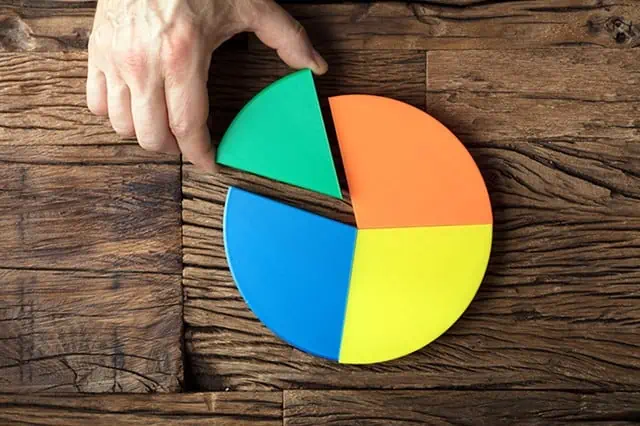
The following represent some of the best mutual funds you can buy at the moment—and they’re priced quite reasonably too.
While annual expense ratios weren’t used explicitly in the selection process, the vast majority of these funds sport below-category-average fees. It makes sense, too: Fees eat into a fund’s performance, so providers that charge onerous management expenses are, in a way, handicapping their fund’s returns. Meanwhile, providers with lower fees get a bit of an intrinsic performance edge.
A few final notes to keep in mind as you’re reading this list:
While all of these funds have no loads, brokerage commission fees might apply; check your brokerage before purchasing. Also, your brokerage might require a larger minimum initial investment for mutual funds than the fund itself requires. And some brokerage accounts might not let you purchase certain funds, even if they’re generally available to retail investors. (For instance, you might be able to buy the completely made-up Woodley Investments Large-Cap Fund at Schwab, but not at Fidelity.)
Lastly, this isn’t a ranking of the best funds. Every fund on here rates as excellent already. This is just listed in a natural progression of various portfolio needs, starting broadly with different stock flavors and ending with a few bond funds.
With all that out of the way, let’s look at the best mutual funds you can buy.
1. Fidelity 500 Index Fund
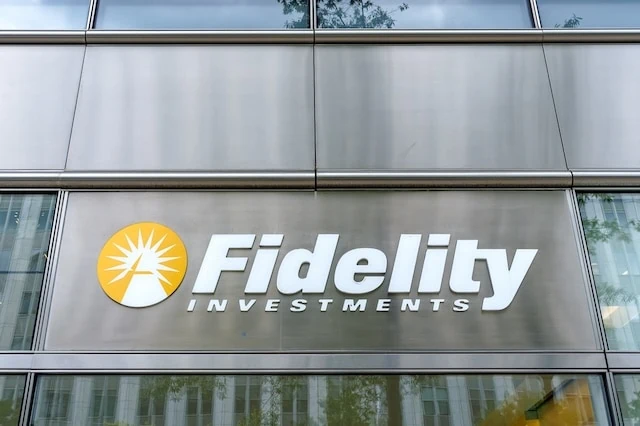
- Style: U.S. large-cap stock
- Assets under management: $599.4 billion
- Dividend yield: 1.3%
- Expense ratio: 0.015%, or 15¢ per year for every $1,000 invested
- Minimum initial investment: None
Stock funds that invest in American large-cap companies frequently serve as a portfolio’s foundation. These companies provide a relatively high amount of stability while still offering some upside potential—and in many cases, returns from dividends, too.
One of the most common ways of getting this exposure is through an S&P 500 fund such as the Fidelity 500 Index Fund (FXAIX). This Fidelity index fund simply tracks the S&P 500 Index—a collection of 500 of the largest American companies, and a barometer of the American stock market.
To be included in this index, a company must have a market capitalization of at least $18.0 billion, its shares must be highly liquid (shares are frequently bought and sold), and at least 50% of its outstanding shares must be available for public trading, among other criteria. A company must also have positive earnings in the most recent quarter, and the sum of its previous four quarters must be positive—two traits that weed out at least a few massive firms that would otherwise be included.
Note: Once a company becomes an S&P 500 component, it’s not automatically kicked out if it fails to meet all of the criteria. However, the selection committee would take this under consideration and possibly boot the company.
People like to consider the S&P 500 a reflection of the U.S. economy. But it’s hardly a perfect representation. For instance, the technology sector accounts for nearly 30% of FXAIX’s assets. Real estate, materials, and utilities merit less than 3% apiece. This is in no small part because, like many indexes, the S&P 500 is market capitalization-weighted, which means the greater the size of the company, the more “weight” it’s given in the index. Currently, trillion-dollar-plus companies Microsoft (MSFT), Apple (AAPL), and Nvidia (NVDA) sit atop Fidelity 500 Index Fund’s holdings list.
Turnover, which is how much the fund tends to buy and sell holdings, is always low, given that only a handful of stocks enter or leave the index in any given year. This tamps down (and often eliminates) capital-gains distributions, which receive unfavorable tax treatment. This makes FXAIX an extremely tax-efficient option for taxable brokerage accounts.
So … why offload this core positioning to a brainless index fund?
The S&P 500 Index is commonly used as a performance benchmark for mutual funds that invest in U.S.-based large-cap stocks. But the majority of fund managers who run these funds typically struggle to beat their benchmark. According to S&P Dow Jones Indices, “60% of all active large-cap U.S. equity funds underperformed the S&P 500.” That’s no anomaly: Thanks to yet another 365 days of lagging in 2023, the majority of active managers have now failed to beat the S&P 500 in 21 of the past 24 years. Thus, buying the S&P 500 is literally putting “if you can’t beat it, join it” into action.
And once you add in its exceedingly low costs, Fidelity 500 Index Fund isn’t just one of the best Fidelity funds to buy—it’s one of the best mutual funds you can buy across all providers.
Funnily enough, though, FXAIX is the only index fund featured here today. Very few index funds met the underlying qualifications, and those that did either had too niche of a strategy to make the final cut, or weren’t as good as a competing fund that ultimately landed on this list. While tracking a benchmark is cost-effective and can be enough to topple a majority of managers, a few humans rise above the benchmarks in virtually every category and earn their funds top honors.
Want to learn more about FXAIX? Check out the Fidelity provider site.
Related: The 10 Best Fidelity Funds to Buy
2. T. Rowe Price U.S. Equity Research Fund
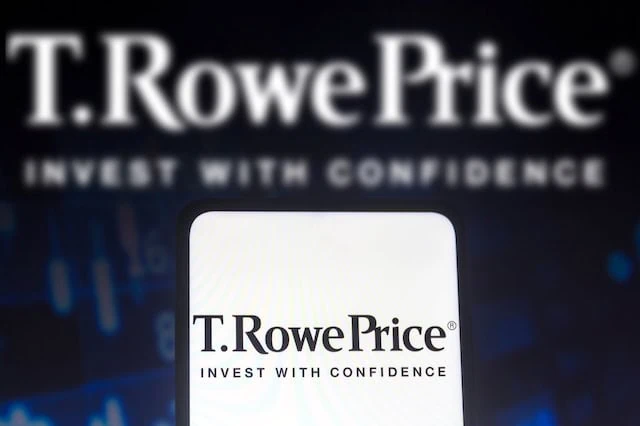
- Style: U.S. large-cap stock
- Assets under management: $12.4 billion
- Dividend yield: 1.0%
- Expense ratio: 0.44%, or $4.40 per year for every $1,000 invested
- Minimum initial investment: $2,500
T. Rowe Price U.S. Equity Research Fund (PRCOX) is one of the aforementioned funds that rise above.
PRCOX managers Ann Holcomb, Jason Polumn, and Jason Nogueira are explicit about going after the S&P 500. Per the fund summary: “The strategy attempts to create a portfolio with similar characteristics to the Standard & Poor’s 500 Stock Index with the potential to provide excess returns relative to the Index.”
So while it’s not an S&P 500 tracker, U.S. Equity Research looks awfully close at first glance. All of its sector holdings are within 1 percentage point of the index. You won’t find much variance in top 10 holdings, either—names like Microsoft (MSFT), Nvidia (NVDA), and Apple (AAPL) show up at comparable weights across both PRCOX and the S&P 500. And both T. Rowe’s fund and the index tend to lean more toward growth than value.
One of the biggest differences is portfolio size—PRCOX has roughly 200 fewer stocks, which means many of its holdings can enjoy slightly larger concentrations than they do within the index.
And that, perhaps, is how management has found its alpha.
PRCOX has not only outperformed the S&P 500 across every meaningful medium- and long-term time frame, but it has also ranked in the top 10% of its Morningstar Category (large blend, which is a mix of value and growth) by performance over the trailing three-, five-, 10-, and 15-year periods.
As a result, a product that ranks among T. Rowe Price’s best funds also earns a place among the market’s overall best mutual funds.
Want to learn more about PRCOX? Check out the T. Rowe Price provider site.
Related: 10 Best Index Funds to Buy
3. Oakmark Fund
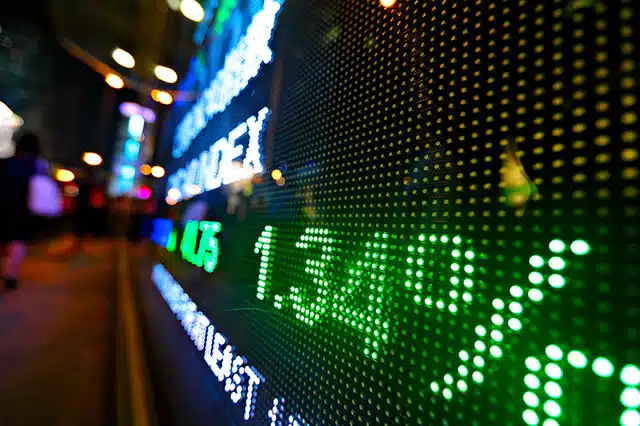
- Style: U.S. large-cap value stock
- Assets under management: $23.1 billion
- Dividend yield: 0.9%
- Expense ratio: 0.96%, or $9.60 per year for every $1,000 invested
- Minimum initial investment: None
Oakmark Fund (OAKMX) is an actively managed large-cap fund that leans in the other direction—toward value.
Portfolio managers Bill Nygren, Michael Nicolas, and Robert Bierig “will purchase securities only when priced substantially below our estimate of intrinsic value. After purchase, we patiently wait for the gap between price and intrinsic value to close.”
As a for-instance, in the fund’s first-quarter commentary, Nygren notes that stocks added to the portfolio since the beginning of 2023 have a median price-to-earnings ratio of 12 times 2024 estimates, which is a little more than half of the S&P 500’s P/E multiple. “We believe that by staying invested while always shifting the portfolio to the stocks that appear least expensive, we will achieve results far superior to moving in and out of cash,” he says.
Importantly, though, while OAKMX management might point out the cheaper overall P/E ratio, it’s not as strictly bound to specific levels of specific valuation metrics as, say, a rules-based index would be. So while much of Oakmark’s tight 55-stock portfolio might fit into the traditional value mold right now—like top-10 holdings Charles Schwab (SCHW) and General Motors (GM), for instance—you get a few outliers, too. Google parent Alphabet (GOOGL), for instance, sits atop OAKMX’s portfolio at 3% of assets, but is quite absent from many of the largest value index funds.
It’s difficult to ask for a better track record. OAKMX’s three-year returns are within the top 5% of its category (large value), while its five-, 10-, and 15-year returns are within the top 2%. So while Oakmark’s expenses are among the highest of our collection of top mutual funds, management is clearly earning their keep.
Want to learn more about OAKMX? Check out the Oakmark Funds provider site.
Related: 10 Best Dividend Stocks to Buy
4. FPA Queens Road Small Cap Value Fund

- Style: U.S. small-cap value stock
- Assets under management: $750.7 million
- Dividend yield: 1.1%
- Expense ratio: 0.96%*, or $9.60 per year for every $1,000 invested
- Minimum initial investment: $1,500
If your primary investing concern is growth, and you have a pretty healthy risk appetite, you might get more bang for your buck by investing in small-cap stocks. As a general rule, smaller companies (usually considered to be those with market caps of $2 billion or less) have more potential for explosive upside.
But FPA Queens Road Small Cap Value Fund (QRSVX) takes a different tack with small caps. Instead of targeting splashy growth plays, it looks for little fish that have gone unnoticed in the large Wall Street pond.
Since the fund’s inception in 2002, Portfolio Manager Steven Scruggs has used a four-pillar process to identify undervalued small companies. Specifically, he looks for companies with strong balance sheets and free cash flow (FCF), manageable debt, competent leaders with a successful track record, and discounts to FCF, among other things. But he doesn’t completely eschew growth—FPA wants to “own companies in growing industries with stable, competitive dynamics and favorable economics.”
A critical difference between many index funds and actively managed funds is portfolio size. It’s fairly common for index funds’ holdings to number in the hundreds if not thousands, whereas most actively managed funds keep their investments in the double digits. Why does this matter? Consider this: The Vanguard Small-Cap ETF (VB), a prominent small-company index fund, spreads its weight across more than 1,400 stocks—and a consequence of that is that no stock accounts for more than half a percent’s worth of assets. But PFA Queens’ fund invests in just 50 stocks, with current top holdings TD Synnex (SNX), PVH Corp. (PVH), and InterDigital (IDCC) each accounting for more than 4% of the fund’s performance.
In other words, QRSVX isn’t nearly as diversified as your basic index fund—which means less protection against single-stock disasters, sure, but it also means the potential to harness more outperformance from Scruggs’ selections. And harness it has—FPA Queens Road Small Cap Value has beaten the category average over the trailing three-, five-, and 10-year periods. Turnover of 13%, which means 13% of the fund’s holdings change hands every year on average, is very low for a small-cap fund, creating less of a trading-cost drag on performance.
* Includes 0.08% fee waiver. Funds will sometimes waive or reimburse a portion of their fees for a limited time. Fee waivers may be extended. We will provide updates to fees (including waivers) as appropriate.
Want to learn more about QRSVX? Check out the FPA provider site.
Related: 9 Monthly Dividend Stocks for Frequent, Regular Income
5. Commerce MidCap Growth Fund
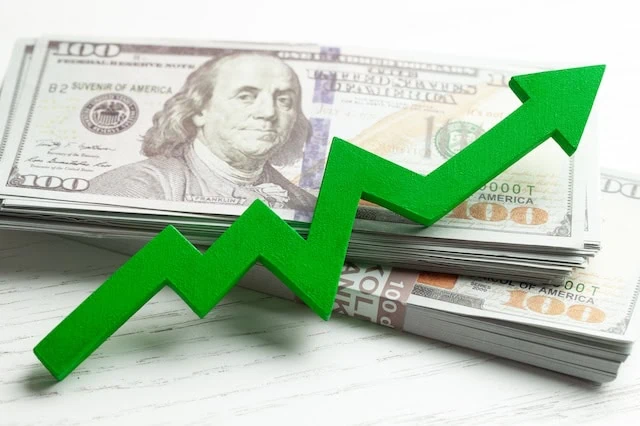
- Style: U.S. mid-cap growth stock
- Assets under management: $215.4 million
- Dividend yield: 0.3%
- Expense ratio: 0.80%, or $8.00 per year for every $1,000 invested
- Minimum initial investment: $1,000
We frequently refer to mid-cap stocks—companies worth $2 billion to $10 billion by market cap—as “Goldilocks” stocks. That’s because they enjoy some qualities of their large-cap brethren (some size, some stability, revenue stream diversity, some access to capital) and some qualities of smaller firms (they’re nimble and have more upside potential). That combination of traits is what Goldilocks would call “just right.”
“In any given 1-year rolling period since 2003, small-, mid-, and large-cap stocks have outperformed 33%, 26%, and 41% of the time,” says investment company Hennessy Funds. “However, the longer mid-cap stocks are held, the more often they outperformed. In fact, 60% of the time, mid-caps outperformed small- and large-cap stocks over any 10-year rolling period in the past 20 years.”
Better still? During the 20-year period (through 9/30/23) that Hennessy studied, it found that while mid-caps delivered higher risk than large caps, they delivered better returns … and they generated both lower risk and higher returns than small caps.
Commerce MidCap Growth Fund (CFAGX) targets the “growthier” cohort of these medium-sized corporations. Commerce’s Equity Strategy Team, a group of six managers averaging 38 years of experience, attempts to identify and hold mid-cap firms “that show the potential for above-average growth in earnings.”
Like with most mid-cap funds, a few of CFAGX’s 80 or so holdings stray outside the mid-cap range, with about 5% of assets invested in smaller large-cap stocks, and 15% in larger small-cap shares. Unsurprisingly for a growth fund, technology firms loom largest at more than a quarter of assets, including top holdings Teradyne (TER), a test and automation equipment maker, and The Trade Desk (TTD), a marketing automation firm. Health care (20%), industrials (18%), and consumer cyclical (15%) also carry double-digit weights.
CFAGX isn’t a juggernaut—it has beat the category average over most periods but has fallen short of the index in several periods, too—but “when adjusting for risk, this fund is competitive,” Morningstar says in explaining its Gold Medalist rating. “The share class had a higher Sharpe ratio, a measure of risk-adjusted return, than the index over the trailing 10-year period. This strategy also delivered a smooth ride for investors, with a relatively low standard deviation of 15.4%, compared with the benchmark’s 18.0%.”
It’s also relatively inexpensive for an actively managed mutual fund from outside the major providers. At 0.80% annually, Commerce MidCap Growth’s fees are below the category average.
Want to learn more about CFAGX? Check out the Commerce Funds provider site.
Related: 7 High-Quality, High-Yield Dividend Stocks
6. Monongahela All Cap Value Fund

- Style: U.S. all-cap value stock
- Assets under management: $34.3 million
- Dividend yield: 1.5%
- Expense ratio: 0.85%*, or $8.50 per year for every $1,000 invested
- Minimum initial investment: $5,000
The smallest fund on this list by a country mile is the Monongahela All Cap Value Fund (MCMVX), which currently has just around $30 million in assets under management. It’s a fun juxtaposition given it has one of the broadest mandates: find domestic value stocks of all shapes and sizes.
Many all-cap funds are “total market” funds that seek to own as much of a stock market (say, the U.S. stock market, or international stock markets) as possible. The result is portfolios of thousands of stocks that, while including some exposure to small- and mid-cap stocks, are typically market-cap weighted and thus mostly invested in large caps.
Not Monongahela All Cap Value.
Co-Managers Mark and Michael Rodgers might be able to select from a vast universe of value-priced stocks, but they narrow it down to a tight portfolio of around 50 stocks that are far more evenly spread across the market capitalization spectrum. In this case, MCMVX is 22% invested in large caps, 48% in mid-caps, and 28% in smalls, with a tiny remainder held in cash and bonds.
The strategy itself isn’t complicated. Management selects stocks they believe are trading well beneath their intrinsic values and can also offer both appreciation and income. At whatever point a holding is determined to be over-valued, no longer offers growth potential, or experiences a significant detrimental change to the investing thesis, MCMVX will reduce or exit the position.
Right now, the fund is heaviest in industrials, which make up a quarter of assets. MCMVX also has double-digit holdings in consumer staples, consumer discretionaries, health care, and information technology. Conversely, real estate and communication services are completely unrepresented. Top holdings include the likes of upscale home-goods firm Williams-Sonoma (WSM), irrigation systems specialist Lindsay Corp. (LNN), and engineered products maker Curtiss-Wright (CW).
While nearer-term performance has been a bit more middling, MCMVX has beaten both the category average and its index over the trailing five- and 10-year periods. In the latter, it’s among the top 5% of products in its category.
* Includes 1.05% fee waiver until at least Sept. 1, 2024.
Want to learn more about MCMVX? Check out the Monongahela Capital Management provider site.
Related: 7 Best High-Dividend ETFs for Income-Hungry Investors
7. T. Rowe Price Communications & Technology Fund

- Style: Thematic (communication services and technology)
- Assets under management: $9.1 billion
- Dividend yield: 0.1%
- Expense ratio: 0.77%*, or $7.70 per year for every $1,000 invested
- Minimum initial investment: $2,500
The T. Rowe Price Communications & Technology Fund (PRMTX) seems like a pretty straightforward fund, both in its name and its stated mission of holding communication and technology companies.
However, unlike an index fund that would assuredly be restricted to those sectors only, PRMTX management has a bit more autonomy.
“Unlike some competing funds, this offering will own companies across sectors with tangential links to communications in sectors such as technology, consumer, and real estate,” says Morningstar Analyst Adam Sabban. “Since the inclusion of fast-growing tech and consumer stocks amplifies the fund’s volatility, manager Jim Stillwagon mixes in steadier companies that serve as enablers for the sector, such as cable companies, data center REITs, and cell tower REITs.”
The resulting portfolio includes massive exposure to communication services (43%) and technology (38%), as you’d expect, but also a healthy 12% in consumer discretionary stocks, 5% in financials, and 2% in real estate. More than half of assets are concentrated into the top 10 holdings, which includes high-conviction plays in Facebook parent Meta Platforms (META), Netflix (NFLX), Google parent Alphabet (GOOGL), and Microsoft (MSFT), among others—all stocks you’d expect to see in a fund like this.
You have to take PRMTX’s performance comparisons with a grain of salt, given both the fund’s composition (this is diversified across numerous sectors while the benchmark is strictly a communication services index) and the fact that the communications sector had a massive overhaul in 2018 that added a number of companies previously in the tech sector. Still, T. Rowe Price Communications & Technology Fund has sat within the top 1% of its category over the trailing 10- and 15-year periods. Its performance hasn’t been as overwhelmingly dominant in shorter time periods, PRMTX still has comfortably beat its peers in the trailing three- and five-year time frames.
* Includes 0.05% fee waiver until at least April 30, 2025.
Want to learn more about PRMTX? Check out the T. Rowe Price provider site.
Related: Best Fidelity Retirement Funds for a 401(k) Plan
8. T. Rowe Price Global Stock Fund

- Style: Global large-cap growth stock
- Assets under management: $7.0 billion
- Dividend yield: 0.2%
- Expense ratio: 0.81%, or $8.10 per year for every $1,000 invested
- Minimum initial investment: $2,500
The U.S. has been one of the world’s most fruitful stock markets for decades. So if you believe in the American economy’s ability to keep growing, naturally, you should continue to invest the lion’s share of your money in U.S. assets.
Still, many advisors will tell you it’s important to diversify geographically, too—a little hedging of bets, sure, but also, there are hundreds of high-achieving companies scattered across the globe, and it makes sense to have a little exposure to those firms, too.
You can get the best of both worlds with the T. Rowe Price Global Stock Fund (PRGSX).
An important note about fund terminology. The word “international” in a fund’s name implies its holdings come from anywhere but America. However, the word “global” implies that the fund holds both U.S. and international stocks. PRGSX is the latter, offering a roughly 65% domestic/35% foreign split.
Manager David Eiswert and his team of global analysts home in on companies capable of generating above-average earnings growth over time. “Eiswert filters the global equity universe through his investment framework, which emphasizes investing in quality companies at a time when fundamentals are poised to inflect higher, but without paying too much,” Sabban says. Currently, Global Stock’s team has locked in on about 90 holdings—overwhelmingly large-cap in nature, and with a clear bent toward growth stocks.
The international portion of the portfolio is most heavily tilted toward Japan, which still only commands less than 6% of assets. Canada, Germany, the Netherlands, and the U.K. all sit around 3% each. The top 10 holdings are thick in U.S. stocks, but London Stock Exchange Group (LNSTY) and Taiwan Semiconductor (TSM) make the cut.
Even at its worst, PRGSX still sits around the category average. But when it shines—which it does over most medium- and long-term time frames—it’s not just one of the best T. Rowe Price funds you can own, but one of the best mutual funds to buy period.
Want to learn more about PRGSX? Check out the T. Rowe Price provider site.
Related: 13 Dividend Kings for Royally Resilient Income
9. Fidelity Investment Grade Bond Fund
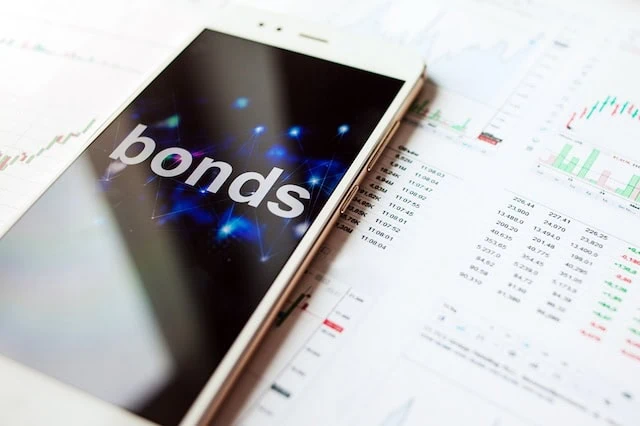
- Style: Intermediate-term core bond
- Assets under management: $11.1 billion
- SEC yield: 4.2%*
- Expense ratio: 0.45%, or $4.50 per year for every $1,000 invested
- Minimum initial investment: None
Most investors need some exposure to bonds, which is debt that’s issued by governments, companies, and other entities. Their interest payments and relative lack of volatility make them an excellent tool for providing a portfolio with stability and income. But how much bond exposure you need will vary by age—because they’re better at protecting wealth than growing it, people typically start with little in the way of bond holdings earlier in life, then gradually hold more bonds as they get closer to (and into) retirement. (Purpose-built investment products called target-date funds capture this dynamic automatically for investors.)
But individual bonds can be a hassle. Data and research on individual issues is much thinner than it is for publicly traded stocks. And some bonds have minimum investments in the tens of thousands of dollars. But you can blunt these problems by purchasing a bond fund, which allows you to invest in hundreds or even thousands of bonds with a single click—and, in many cases, very low fees.
Core bond funds like the Fidelity Investment Grade Bond Fund (FBNDX) are the, ahem, gold standard.
Co-Managers Jeff Moore, Michael Plage, and Sean Corcoran have built a portfolio of more than 4,300 investment-grade securities spanning numerous types of debt types.** FBNDX’s largest current allocation is to U.S. Treasury bonds, which command 45% of assets. It also holds a 26% weight in corporate bonds, 14% in pass-through mortgage-backed securities (MBSes), 7% each in commercial MBSes and asset-backed securities (ABSes), and sprinklings of other debt. The fund also has a 9% allocation to cash at the moment.
Diversification goes beyond debt categories, too. The fund holds bonds with maturities of between just a few months and more than 20 years, though the biggest slug is in intermediate-term bonds of five to 10 years until maturity. Duration, a measure of interest-rate sensitivity, is a bit above six years. While the actual calculation is much more complex, this basically implies that for every 1-percentage-point increase in interest rates, FBNDX would decline by 6%, and vice versa. It’s a moderate amount of risk, but no more.
From a performance standpoint, Fidelity Investment Grade Bond’s management has been up to the task, beating both its category average and index over every meaningful time period. It is particularly productive over the long-term, topping at least 89% of funds (if not more) over the trailing five-, 10-, and 15-year periods.
Long story short: Shareholders are instantly plugged into a widely diversified and well-selected set of fixed-income assets, and at a very reasonable cost. This makes FBNDX one of the best mutual funds to buy for anyone who wants to buy a single core product and call it a day.
* SEC yield reflects the interest earned across the most recent 30-day period. This is a standard measure for funds holding bonds and preferred stocks. ** Moore plans to retire from Fidelity on Dec. 31, 2024. A successor has not yet been named.
Want to learn more about FBNDX? Check out the Fidelity provider site.
Related: Best Schwab Retirement Funds for a 401(k) Plan
10. Dodge & Cox Income Fund

- Style: Intermediate-term core-plus bond
- Assets under management: $88.6 billion
- SEC yield: 4.8%
- Expense ratio: 0.41%, or $4.10 per year for every $1,000 invested
- Minimum initial investment: $2,500
Fidelity’s FBNDX is referred to as a “core” bond fund, which means it holds several types of core debt categories, such as U.S. Treasuries and investment-grade corporate bonds. Investors with a little more appetite for risk might also consider a “core-plus” bond fund, which also holds a variety of debt securities—but in addition to core bond categories, they can also hold noncore categories such as below-investment-grade (junk) corporate bonds and emerging-market debt.
Consider Dodge & Cox Income Fund (DODIX), which like FBNDX focuses on intermediate-term bonds, but it’s also allowed to explore a wider range of debt. It’s benchmarked to the Bloomberg U.S. Aggregate Bond Index (the “Agg”), arguably the market’s most prominent broad bond index. However, in addition to owning many of the core investment-grade debt that FBNDX holds, DODIX management may “pursue areas the benchmark may not cover, such as below-investment-grade debt, debt of non-US issuers, and other structured products.”
At the moment, Dodge & Cox Income’s seven-person management team isn’t heavily involved in anything exotic. It’s heaviest in securitized debt at 47% of assets, followed by (predominantly investment-grade) corporates at 33%, 15% in Treasuries, 4% in other government-related debt, and less than 1% in cash. Only about 6% of assets have junk ratings, and while maturities run the gamut, it’s most concentrated in debt with five to 10 years left. Duration is close to both the “Agg” and FBNDX at six years.
Dodge & Cox Income has bested its category average and index over every meaningful time period. It also has taken advantage of its wider available universe, beating FBNDX across all standard time frames, too.
Want to learn more about DODIX? Check out the Dodge & Cox provider site.
Related: The Best Retirement Plans [Workplace + Personal]
11. Fidelity Floating Rate High Income

- Style: Floating-rate bank loan
- Assets under management: $14.4 billion
- SEC yield: 8.5%
- Expense ratio: 0.72%, or $7.20 per year for every $1,000 invested
- Minimum initial investment: None
A less-traveled debt investment is the bank loan, which is a loan made by a bank or another financial institution to a company for any number of reasons—the money could be used for something specific like paying for an acquisition or refinancing debt, or just for general purposes.
Bank loans are typically “floating-rate” in nature, which means the rate adjusts over time based on changes in a reference interest rate. These are typically riskier than traditional bonds, so they often have lower credit quality (many are junk-rated); on the flip side, this enhanced risk means they usually throw off much higher interest rates.
That’s the case with Fidelity Floating Rate High Income Fund (FFRHX), which invests primarily in floating-rate bank loans and currently yields well more than 8%. Management takes a conservative tack, typically buying B- and BB-rated securities (the higher end of junk) while making fewer opportunistic dives in lower-rated loans than many of its contemporaries. And the fund wants to invest in loans made to companies with strong balance sheets, high free cash flow, improving credit profiles, and other positive financial traits.
Almost 90% of the fund is invested in term and revolving bank loans, with the rest spread among other floating-rate securities, fixed-rate bonds, and cash. Only about 5% of assets are in holdings rated CCC or below.
FFRHX is an excellent illustration of how management makes or breaks the fund. Fidelity Floating Rate High Income is just above the bottom third of its category, by performance, over the trailing 15-year period. But current manager Eric Mollenhauer didn’t take the helm until April 2013. Under his stewardship—along with co-managers Kevin Nielsen (joined in 2018) and Chandler Perine (joined in 2022)—FFRHX’s performance has been around the top 10% over the trailing three, five, and 10 years.
And in this case, the provider itself offers the fund an additional edge.
“Fidelity’s size and presence in the bank-loan market give this strategy a unique edge extending beyond the fundamental credit research that has long been the hallmark of this high-income research team,” says Morningstar Analyst Max Curtin. “With a dedicated capital markets solutions advisor honing relationships with private equity sponsors, this group takes advantage of harder-to-source deals and favorable allocations compared with smaller players in the asset class.”
Want to learn more about FFRHX? Check out the Fidelity provider site.
Related: Best Self-Employed Retirement Plans
12. Vanguard Emerging Markets Bond Fund
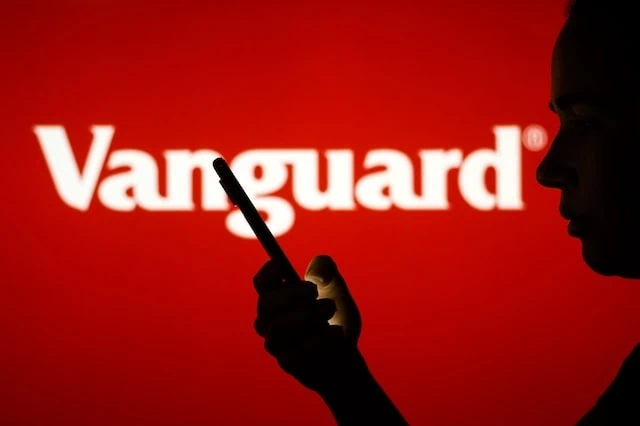
- Style: Emerging-markets bond
- Assets under management: $238.6 million
- SEC yield: 6.3%
- Expense ratio: 0.55%, or $5.50 per year for every $1,000 invested
- Minimum initial investment: $3,000
Another place to seek out high yields is emerging-markets debt.
“Emerging markets” (EMs) is a term for countries with less mature economies and financial markets than more developed countries like the U.S., Japan, and much of Western Europe. Investing in these markets often involves more risk because of factors such as heightened political volatility, state management of some companies, and less financial regulation. Conversely, these countries tend to grow at much more rapid rates than their developed counterparts, making them a popular source of portfolio growth via their stocks and bonds alike.
Vanguard Emerging Markets Bond Fund (VEMBX) is one of the best mutual funds to buy for EM debt exposure. Managers Daniel Shaykevich and Mauro Favini run a relatively narrow portfolio of about 230 bonds (the benchmark holds nearly 1,000) from a few dozen emerging markets, with the largest concentrations in nations including Brazil (8%), Mexico (8%), South Africa (5%), and Colombia (4%).
It’s a slightly “junkier” portfolio, at 36% investment-grade bonds versus 42% for the category average. The effective maturity of nearly 12 years is about two years longer than average, too. That results in a slightly greater amount of interest-rate risk—VEMBX has a duration of 6.4 years versus the category average of 6.0—but also a higher yield.
There’s not much track record to go on here, given that the fund only came live in 2016. But VEMBX has shined in the trailing five-year period, sitting in the top 5% of all category funds and handily beating the Morningstar benchmark index.
Also contributing to the Gold Medalist rating is cost. Vanguard’s Investor-class shares, which charge 0.55% annually, don’t look cheap compared to most Vanguard funds, but that fee is in the category’s bottom quintile.
Want to learn more about VEMBX? Check out the Vanguard provider site.
Related: WealthUp’s Winningest Tech Stocks to Buy
13. T. Rowe Price Capital Appreciation

- Style: Aggressive allocation
- Assets under management: $64.4 billion
- Dividend yield: 1.9%
- Expense ratio: 0.72%, or $7.20 per year for every $1,000 invested
- Minimum initial investment: $2,500
T. Rowe Price Capital Appreciation (PRWCX) comes at the tail end of this list—very much out of order—because of its status. Specifically, PRWCX is closed to most new investors. This is very much an exception to the rules I laid out above. However, I’m still including it among the best mutual funds you can buy both because of its extremely high quality and because this T. Rowe fund still might be available to some investors via select registered investment advisory (RIA) firms.
T. Rowe Price Capital Appreciation is a type of fund that goes by several names—an “asset allocation fund,” the shorter “allocation fund,” or a “balanced fund.” But all of that means the same thing: It holds stocks and bonds.
PRWCX is designed to invest at least half its assets in stocks, with the rest socked into various debt securities, including corporate bonds, government debt (Treasuries, MBSes, asset-backed securities), and bank loans. It’s primarily a domestic fund, but it can hold at least a quarter of its assets in foreign equities and debt. PRWCX, which currently holds around 330 securities, places 60% of assets in domestic shares, a little more than 30% in domestic bonds, 5% in cash, and is peppering the rest across foreign stock, foreign bonds, and other investments.
Morningstar Analyst Jason Kephart calls David Giroux, who has managed the fund since June 2006, “a five-star manager that hasn’t begun to peak.”
“He’s displayed an innate ability to opportunistically invest across both equities and bonds, capturing pockets of value through strong stock selection and impressively timed shifts between stock and bond exposure,” Kephart says. “His execution of this strategy’s nimble, contrarian approach has delivered topnotch returns for its investors.”
Indeed, Giroux has beaten all his category peers in the trailing 15- and 10-year periods, and he’s beaten 98% of peers over the trailing five- and three-year periods. And PRWCX offers that outperformance at a not-cheap but still-moderate cost.
T. Rowe Price Capital Appreciation’s only sticking point is a critical one—availability. It’s largely closed, so most of us can’t just log into our browsers and buy this fund. But again, if your money is managed through certain RIAs, you might actually be able to buy shares of this gem … and if you find you can, you should.
Want to learn more about PRWCX? Check out the T. Rowe Price provider site.
Related: Best Vanguard Retirement Funds
How Does Your Portfolio Look? Ask Empower

More than 3 million users are putting their retirement on track by putting Empower’s tools and/or advisory services to work for them.
Wondering how your portfolio is shaping up? Sign up with Empower to use its free Investment Checkup tool, which can help you assess your portfolio risk, analyze past performance, and get a target allocation for your portfolio. You can even compare your portfolio to both the S&P 500 and Empower’s “Smart Weighting” Recommendation.
And if you want a fuller advisory experience? Empower’s full-service Wealth Management account pairs the firm’s tools with skilled human management. Empower will create a recommended portfolio spanning six asset classes, then help you implement your plans by giving you access to financial advisors who can guide you through retirement planning, college savings, workplace stock options, and more.
Regardless of how much money you bring to the table, if you sign up, you will be given the option to schedule an initial 30-minute financial consultation with an Empower advisor.
- Empower offers both a free set of portfolio, net worth, and cash flow tracking tools, as well as paid asset management service.
- Link Empower to your bank and investing accounts, credit cards, and more to see a single view of useful information and data, including your net worth.
- Empower Advisory Group offers a comprehensive wealth management service known as Personal Strategy. This managed account solution provides clients with discretionary investment management, personalized portfolio construction, and access to financial planning support. Accounts investing $100k to $250k receive unlimited advice and retirement planning help from financial advisors, as well as a professionally managed ETF portfolio with reviews upon request. Higher asset tiers offer access to dedicated advisors, estate planning, and tax specialists, plus additional investment options like access to private equity.**
- Special offer: If you have $100k+ in investible assets, sign up with our link to schedule a free initial 30-minute financial consultation with an Empower professional.
- Free portfolio tracker (Dashboard)
- Free net worth, cash flow, and investment reporting tools (Dashboard)
- Tax-loss harvesting (Personal Strategy)
- Dividend reinvestment (Personal Strategy)
- Automatic rebalancing (Personal Strategy)
- Low investment expense ratios (Personal Strategy)
- High number of investment accounts supported (Personal Strategy)
- High $100k minimum for investment management (Personal Strategy)
- Moderately high investment management fee (0.89% AUM) compared to other online advisors (Personal Strategy)
Related: Best Fidelity Retirement Funds
The Best Mutual Funds: Frequently Asked Questions (FAQs)

Why does a fund’s expense ratio matter so much?
Every dollar you pay in expenses is a dollar that comes directly out of your returns. So, it is absolutely in your best interests to keep your expense ratios to an absolute minimum.
The expense ratio is the percentage of your investment lost each year to management fees, trading expenses and other fund expenses. This figure matters because every dollar not lost to expenses is a dollar that is available to grow and compound. And over an investing lifetime, even a half a percent can have a huge impact.
Example: If you invest just $1,000 in a fund generating 5% per year after fees, over a 30-year horizon, it will grow to $4,116. However, if you invested $1,000 in the same fund, but it had an additional 50 basis points in fees (so it only generated 4.5% per year in returns), it would grow to only $3,584 over the same period.
Why should I buy no-load funds?
You should buy no-load funds for the same reason you should look to buy funds with lower expenses: The less money that goes to the provider, the more money that goes into your pocket.
Let’s say you have $20,000, so you invest $10,000 into two different mutual funds. Mutual Fund A has no sales charge. Mutual Fund B has a 5% front-end sales charge. Both funds gain 7% annually over the next 30 years. And for the sake of simplicity in this example, we’ll say both funds don’t charge any annual expenses.
- Mutual Fund A will earn you $76,123 at the end of those 30 years.
- Mutual Fund B will earn you $72,317 at the end of those 30 years. You see, when you buy Mutual Fund B, that 5% front-end sales charge means the provider takes 5% out of your initial investment. So rather than investing $10,000 to start, you’re actually just investing $9,500. But you don’t lose just that $500—you also lose another $3,806 in “opportunity cost,” which is the additional money that $500 would have earned had it not been lost to fees!
Sales charges are a significant handicap to a fund’s performance, so it’s only worth buying funds with loads if they produce much superior performance compared to the other funds you’re considering.








